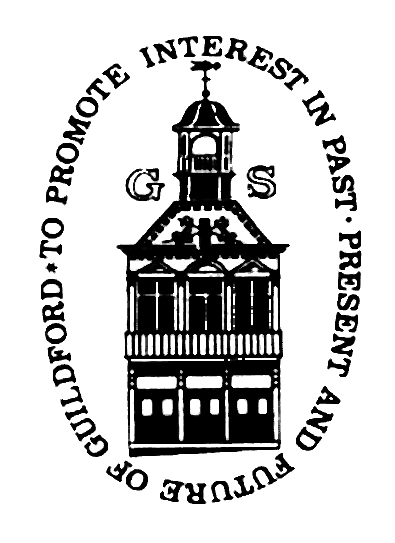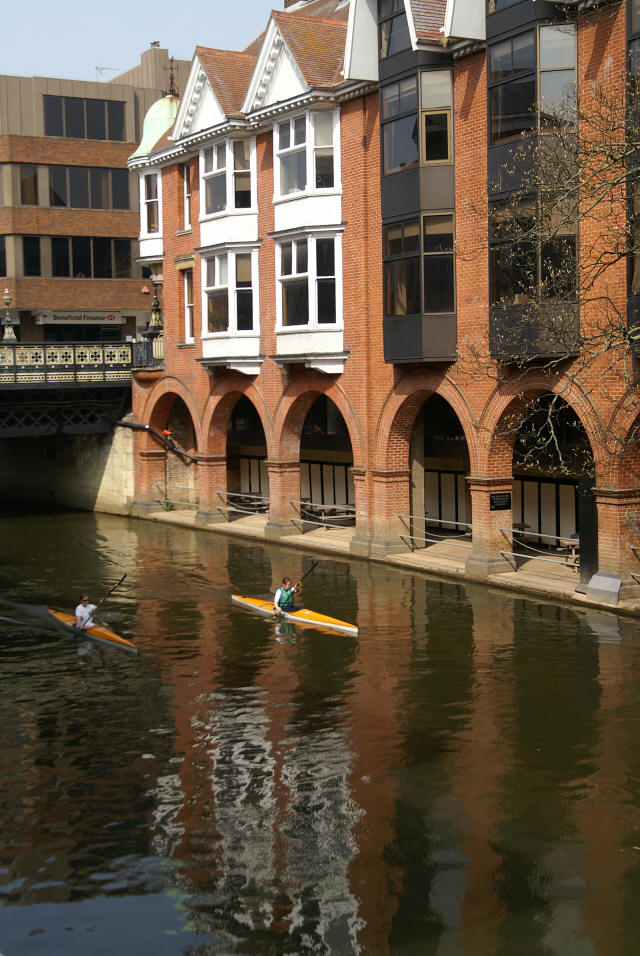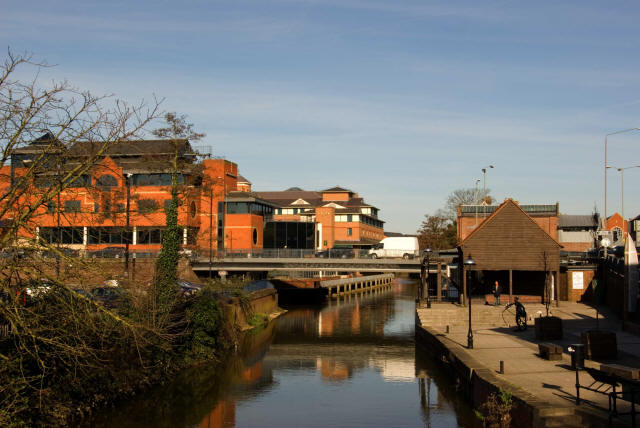

When the Navigation opened in 1653, the old industries made use of it
and new industries developed.
As the woolen industry declined, brewing took over. The first wholesale
brewery was established by Richard Ford
in 1589. Their brewery, on the north-East side of Town Bridge was
taken over by Elkins in 1819 and
closed in 1847. Just across the river the Crookes Brewery (1807) was
demolished in 1929 to make way for the old Farnham Road bus station.
After many amalgamations, the Friary Meux became Guildford’s last
Brewery. Built in 1865 on the site of the Friary Shopping centre, it was
demolished in 1973.
Chalk was exported from the local quarries via Davis Wharf (now the
Guildford Boat House).
The coal and grain for the Breweries was imported by barge and many of
the breweries were also coal merchants.
In 1794 an Iron Foundry was built on what is now the Yvonne Arnaud
Theatre. It was in business
until the 1940s.
Timber for housing and boat building was delivered to the adjoining
wharf, now Debenhams.
Building materials, sand, gravel, bricks and tiles came into the Town
Wharf. The Treadwheel crane with its 18 ft wheel is a Scheduled Ancient
Monument. It was built in the late 17th century and last used in the
1960’s to unload stone for Guildford Cathedral. The Town Wharf was
demolished to make way for the gyratory system and the Treadwheel crane
was moved to its present location.
Gunpowder and Timber were the main cargoes at Dapdune Wharf. The
gunpowder was made at Chillworth Mill on the Tillingbourne. Guildford
did not want Gunpowder carted through the town or stored overnight. When
the Godalming Navigation opened in 1764 the gunpowder was stored and
loaded at Stonebridge Quay.
In the 1960’s Scott Brownrigg & Turner designed “The Meadows” prestigious apartments overlooking the meadows upstream of Millmead. In recent years a number of apartments have been built exploiting the river view.

